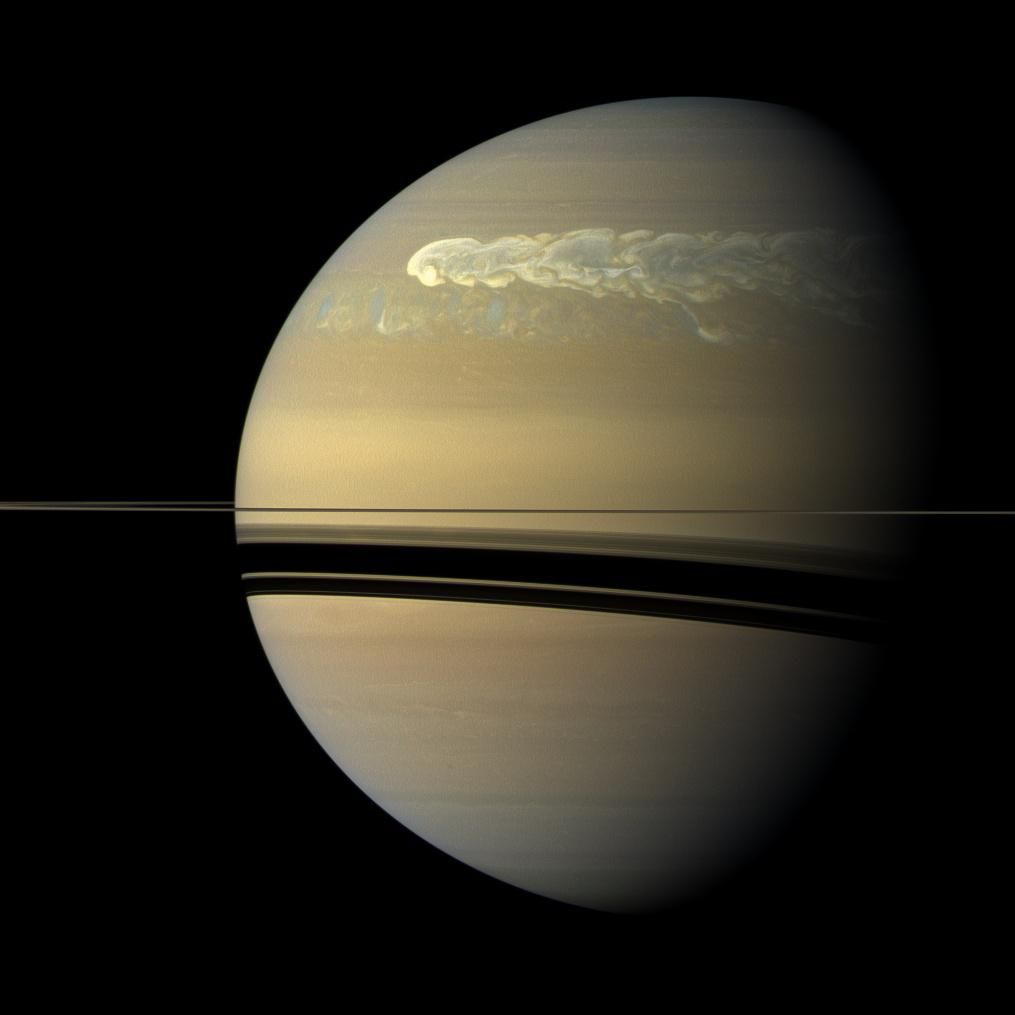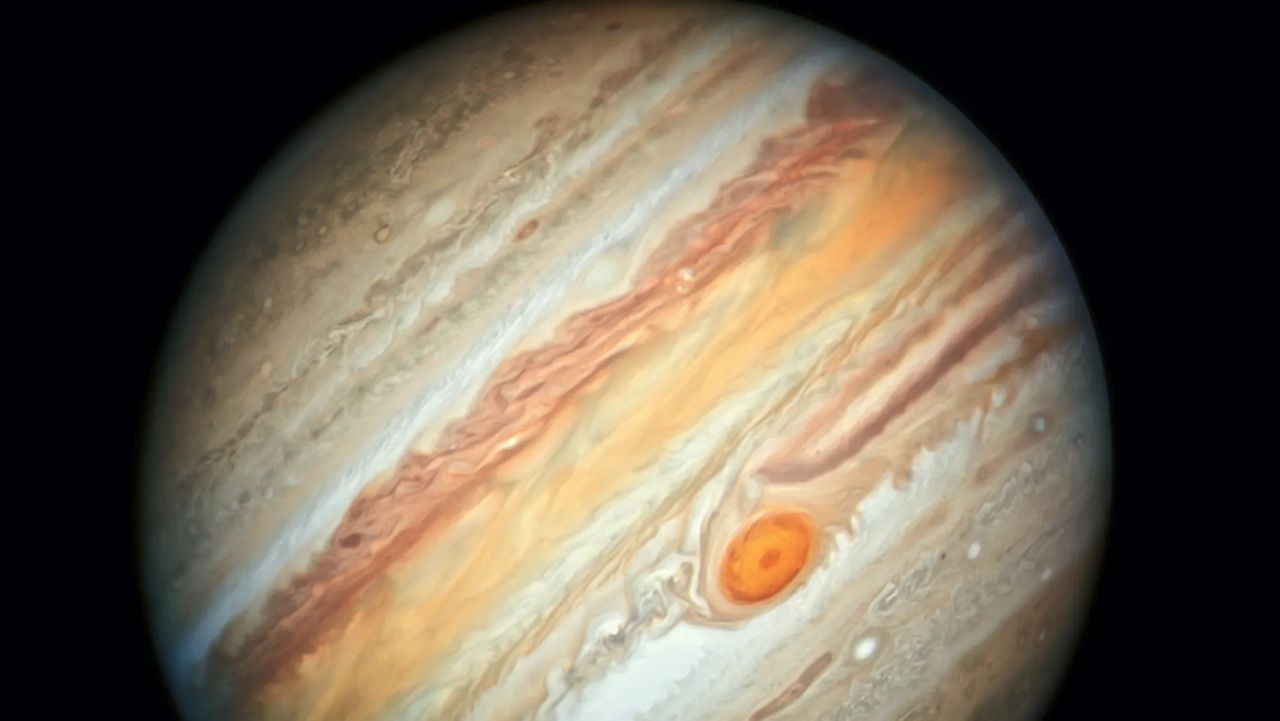The swirly blue marble we live on isn’t the only planet with storms. Other ones are home to extreme weather that ranges from dust storms to swirling storms as big as the Earth itself.
The biggest planet is home to what’s probably the most famous storm in our solar system. The Great Red Spot is twice as wide as Earth, according to NASA, and we know that it’s been there for at least 150 years. It may even be the same feature that astronomers in the 1600s saw.
Winds in the Great Red Spot can reach as high as 400 mph. And why is it red? That remains a mystery, although scientists suspect it may have to do with chemical reactions in Jupiter’s atmosphere.
The big planet also has a big jet stream, recently found by the James Webb Space Telescope. The river of air over Jupiter’s equator is over 3,000 miles wide, speeding along at 300 mph.
Famous for its epic rings, Saturn is no slouch when it comes to storms. The Cassini spacecraft captured a growing storm in 2010 whose tail eventually circled around the planet. While Cassini had spotted other storms during its mission, this one was much larger than those. And it turns out that even the smaller storms produce lightning. Oh, and it has a polar jet stream that’s shaped like a hexagon.

Titan, Saturn’s largest moon, has some Earth-like qualities, including an atmosphere and surface liquid that sticks around… although it’s not water. NASA says methane storms develop around Titan’s equinoxes and have even discovered what they believe are big dust storms.
Sideways-tilted Uranus has a polar vortex, just as we do, and is home to wind speeds that can scream over 500 mph. Astronomers have also spotted dark spots and even thunderstorm-like features.
Meanwhile, Neptune often has big dark spots, too, although they’re not quite as huge or nearly as long-lasting as the one on Jupiter. The Great Dark Spot that Voyager 2 saw over 30 years ago had winds up to 1,300 mph. More recent spots, like one a few years ago, have even moved in ways that scientists didn’t anticipate.
One of our closer neighbors isn’t to be left out. Mars has dust storms that are truly epic, sometimes covering virtually the entire planet and lasting as long as a month. These happen when Mars is closer to the sun, causing greater temperature variations and stronger winds.

The Sun
Our star is a hotbed of solar storminess. It’s constantly sending out charged particles in a massive flow called the solar wind. When the solar wind is especially rambunctious, it disturbs planets’ magnetic fields, creating aurora–and we’re not the only ones that get it. Astronomers have observed aurora on Venus, Mars, Jupiter and Saturn.

Our team of meteorologists dives deep into the science of weather and breaks down timely weather data and information. To view more weather and climate stories, check out our weather blogs section.



